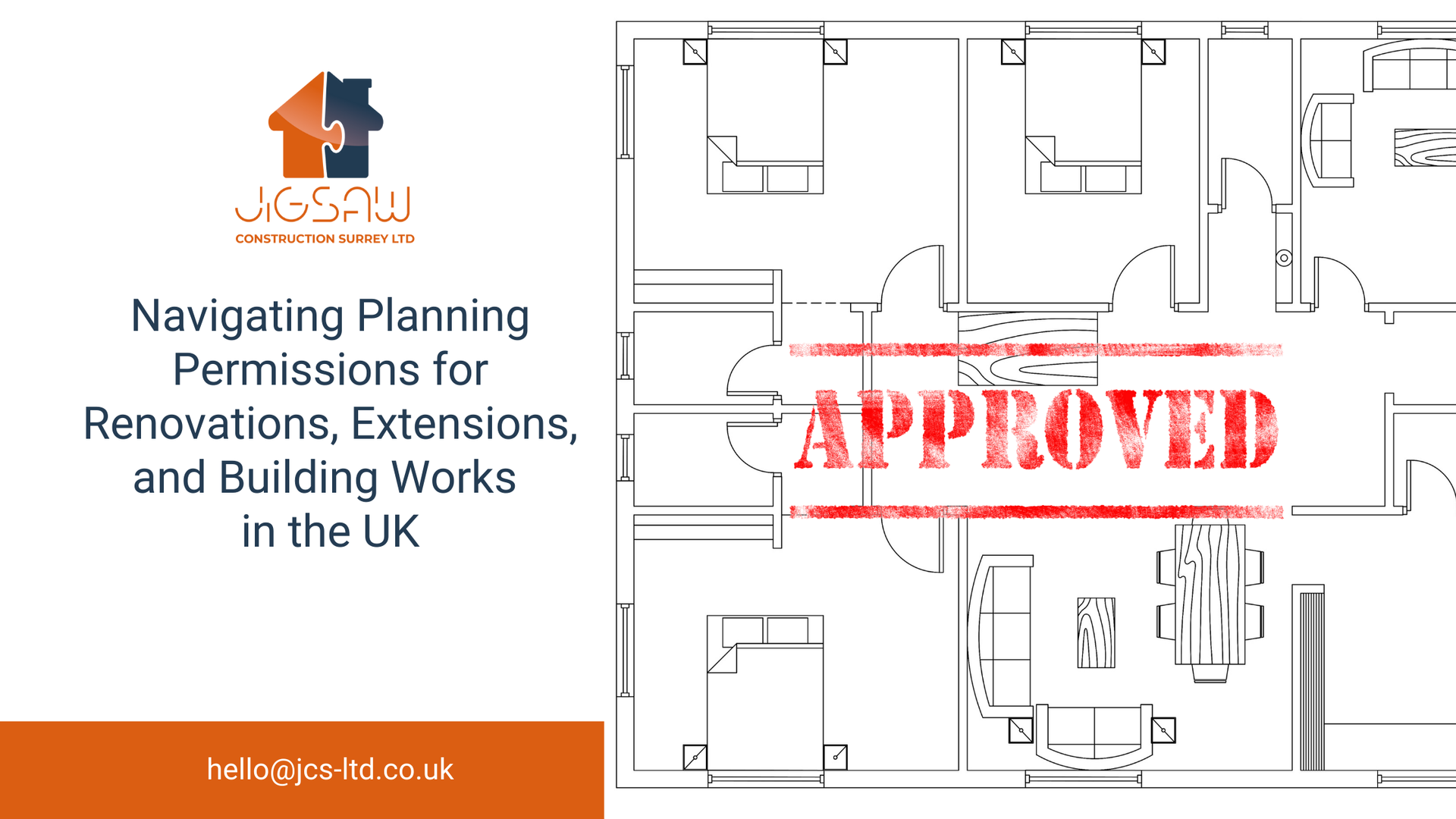
Connect with Jigsaw Construction
Knocking Through
What You Need to Know Before You Start

At Jigsaw Construction Ltd, we understand that knocking through walls can be a great way to create a more open and spacious living area. Whether you’re planning to open up your kitchen into the living room or transform a cramped hallway into a large, airy space, knocking through can offer a stunning result. However, it’s essential to approach the process with the right knowledge and planning to ensure the job is done safely and correctly.
In this blog, we’ll take you through the key considerations and steps for knocking through a wall, as well as the benefits and challenges you may face during the project.
Why Knock Through a Wall?
Knocking through walls is one of the most popular home renovation projects because it can instantly transform the feel of a space. Here are a few reasons why homeowners choose to knock through:
- Create Open-Plan Living: If you love the idea of an open-plan home, knocking through walls can help merge separate rooms into a more cohesive space. Open-plan layouts are perfect for modern living, giving your home a light, airy feel.
- Increase Natural Light: With fewer barriers between rooms, natural light can flow freely through your home, brightening up areas that may otherwise feel dark or cramped.
- Improve Flow and Functionality: Knocking through walls allows for better flow between rooms. This can improve the functionality of spaces like kitchens and living rooms, making them easier to navigate and more enjoyable to live in.
- Enhance Property Value: An open-plan home is in high demand among potential buyers. By knocking through walls, you can add considerable value to your property.
What to Consider Before You Knock Through a Wall
While knocking through walls can be exciting, it’s crucial to approach the project with a solid plan.
Here’s what you need to consider before starting:
- Check for Load-Bearing Walls
Not all walls can be knocked through. Some walls are load-bearing, meaning they support the weight of the floors or roof above. If you’re knocking through a load-bearing wall, you’ll need a structural engineer to assess and ensure the wall is properly supported during and after the demolition. - Seek Planning Permission
In some cases, especially if you live in a listed building or a conservation area, you may need planning permission to knock through a wall. Even if the wall isn’t load-bearing, it’s essential to check with your local council before starting work. - Get the Right Experts Involved
While knocking through a wall may seem like a straightforward task, it requires expertise. At Jigsaw Construction, we work with skilled builders and structural engineers who can handle everything from planning to completion, ensuring the work is done safely and to the highest standards. - Consider the Impact on Services
Before knocking through a wall, you need to check for any hidden utilities, such as gas, electricity, water, or drainage pipes. These could be behind the wall you want to open up, and you’ll need to plan for the relocation of these services, if necessary. - Cost Considerations
The cost of knocking through a wall can vary significantly depending on the size and complexity of the job. Structural changes, permits, and relocation of utilities can add up, so it’s essential to budget accordingly. At Jigsaw Construction, we provide clear, detailed cost estimates so you can make an informed decision about your project.
The Process of Knocking Through a Wall
Once you’ve confirmed that it’s safe to knock through a wall, the next step is getting the work underway. Here’s a general overview of the process:
- Initial Assessment and Design
The first step is to assess the wall and your desired outcome. If you’re knocking through a load-bearing wall, a structural engineer will determine the best way to support the structure. This may involve installing a steel beam or lintel. If there are utilities behind the wall, these will need to be moved or rerouted. - Obtain Necessary Permits
Before beginning, we will ensure that all planning permissions and building regulations are in place. This might involve submitting drawings or plans for approval. - Demolition and Structural Support
The demolition of the wall is carried out carefully to ensure the rest of the house is undisturbed. If necessary, temporary supports will be installed to carry the weight of the structure while the wall is removed. - Install Support Beams
For load-bearing walls, a beam (usually made from steel or timber) will be installed to support the structure. The beam is installed before the wall is completely removed to ensure the building remains stable. - Finish the Opening
Once the wall is removed and the new support is in place, the opening will be finished with plastering, trim, or any other decorative touches to match your existing interior. - Final Inspection
After the work is completed, the project will be inspected to ensure everything is up to code and safe for use.
Potential Challenges of Knocking Through
While knocking through walls can offer amazing results, there are a few challenges to be aware of:
- Unexpected Issues: As with any renovation, there may be unexpected surprises, such as hidden structural issues or the discovery of asbestos. It’s important to work with a professional contractor who can handle these surprises if they arise.
- Disruption: Knocking through a wall can cause disruption in your home. There will be dust, noise, and possible structural changes that may impact your daily routine. Working with a professional company like Jigsaw Construction can minimise the disruption and keep the project on track.
- Costs: Depending on the complexity of the project, the costs can add up quickly. However, investing in high-quality construction and professional services ensures the job is done right and adds lasting value to your home.
Final Thoughts
Knocking through a wall is a fantastic way to open up your living space and improve the flow of your home. However, it’s important to approach the project with the right knowledge and professional support to ensure safety and success. At Jigsaw Construction, we have the expertise to guide you through every step of the process, from initial design and planning to completion.
If you’re thinking of knocking through a wall to create your ideal space, contact us at Jigsaw Construction Ltd. We’re here to help you turn your vision into reality!



